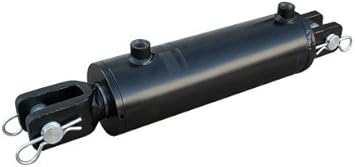Do you know how those substantial, high force driven vehicles work? Here I’m discussing farm vehicles, cranes, trucks that lift, push, pull, dump, and drill in endless all-encompassing uses.
They need a huge power to deal with incredibly heavy loads. Inside the Hydraulic Cylinder essential rules of fluid under pressure are utilised. These cylinders are in the same design and capacity as it was for some time since the 1970s.
If you want to know more about hydraulic cylinders, look at this website. Hydraulic cylinders are made up of 4 primary parts-the external packaging, which is known as a barrel and made in stainless steel, a piston, rod, gland and butt.

The piston turns and is put on the inside of the chamber, and the larger its breadth, or bore, the more force it can harness. The piston is a significant part of the hydraulic system as it gives the cylinder power.
It’s near to rod, which is a long, solid piece of steel that is appearing to be unsolidified path, and thus should be exceptionally rust impenetrable. It includes and pulls out through the organ, which is the forward portion of the cylinder.
At last, the butt is situated at the offensive or end of the cylinder, and it is normally the part that credits to other hydraulic system components, which incorporate pumps, valves and engines.
